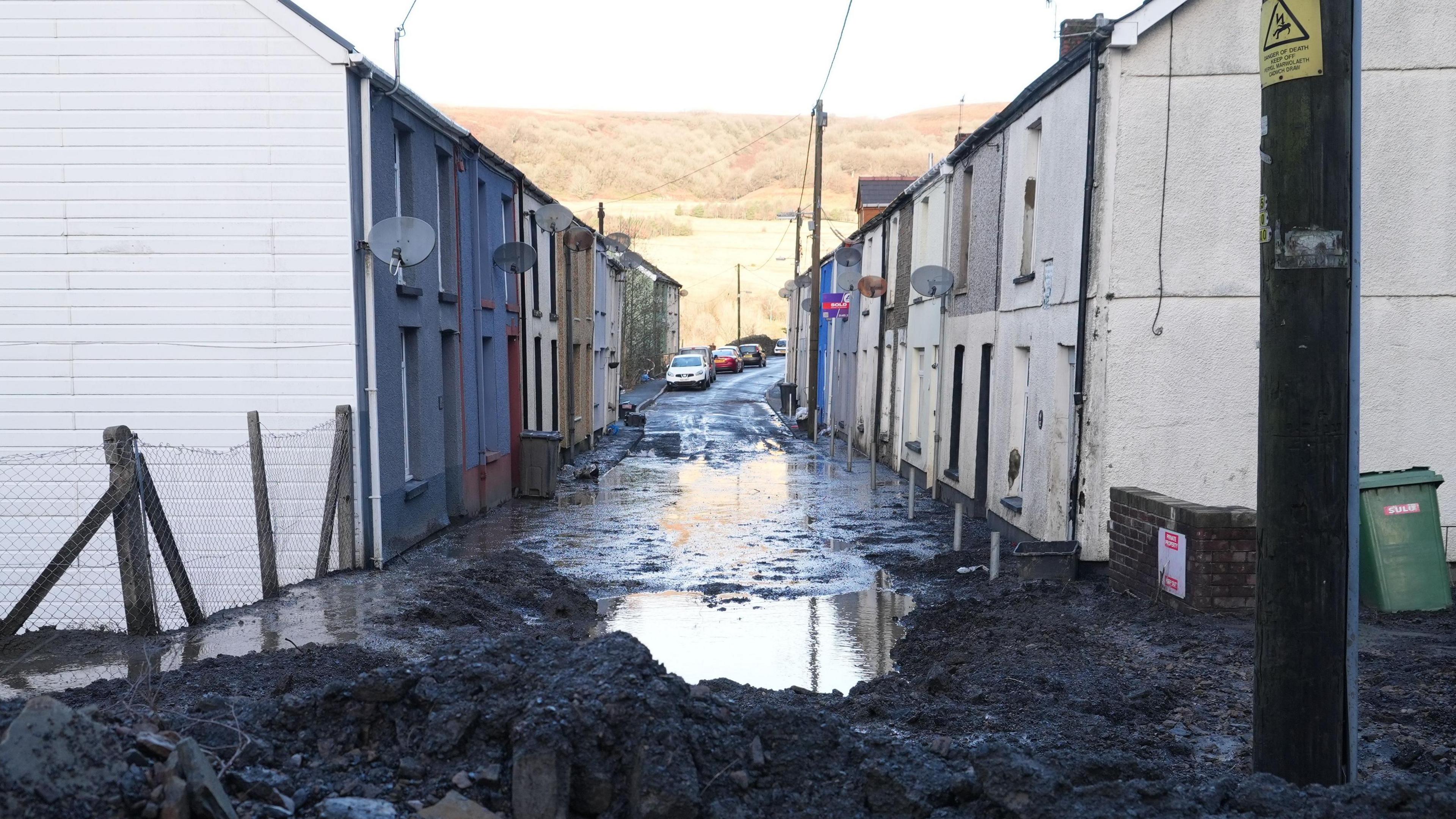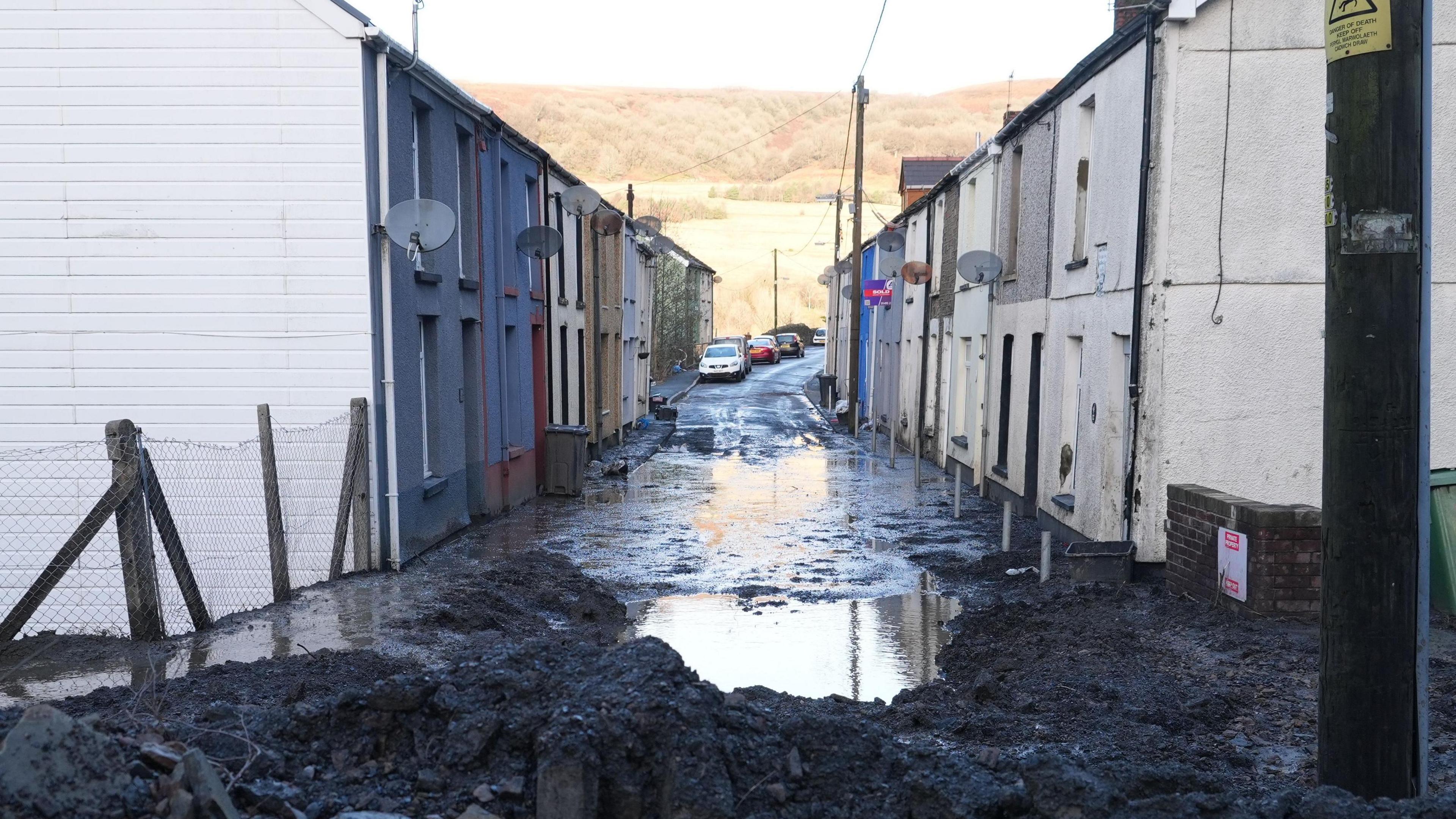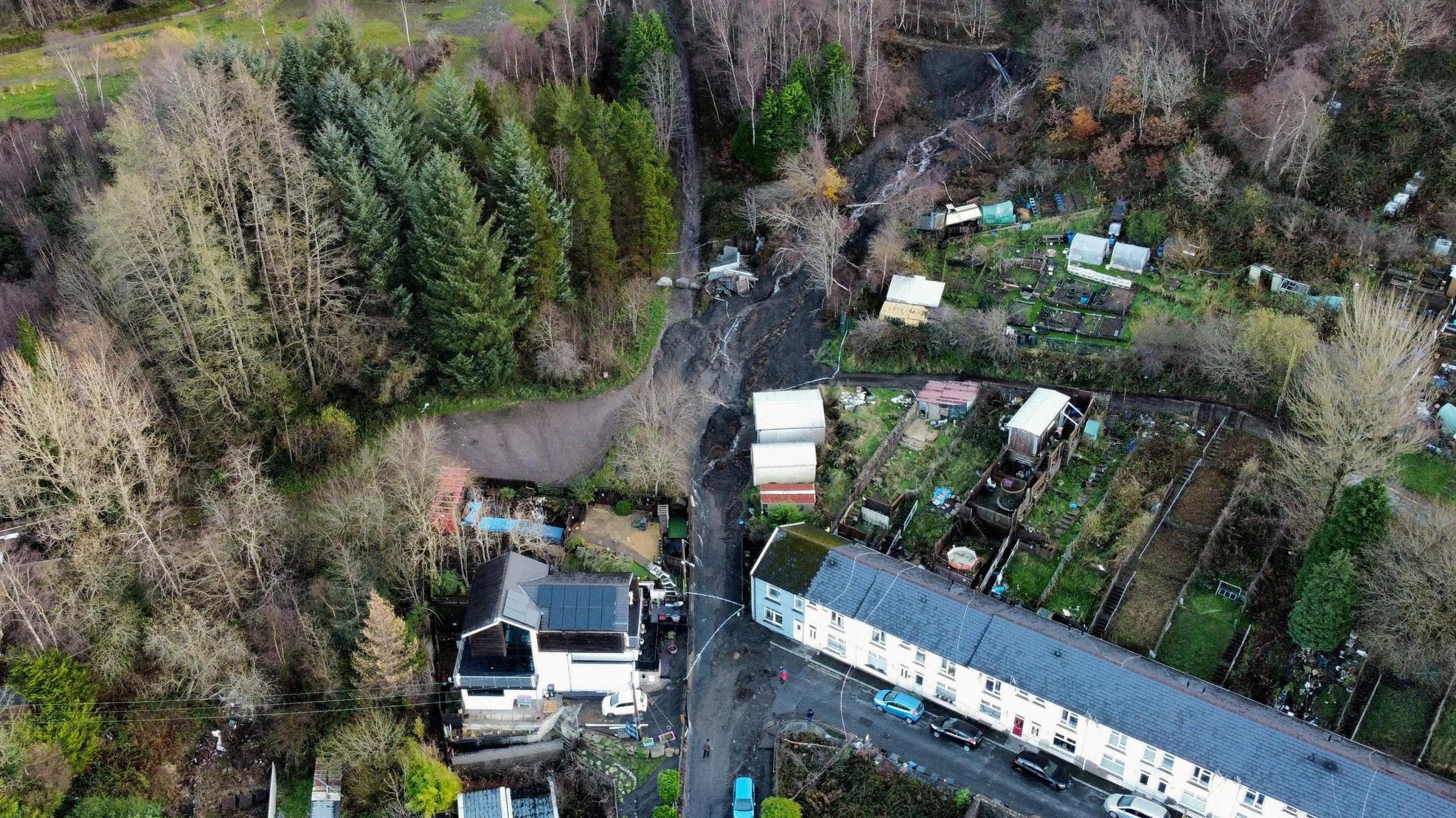About 800,000 homes to get disused coal tip advice

Families were forced from their homes in Cwmtillery after a coal tip collapsed following heavy rain during Storm Bert in November 2024
- Published
About 800,000 homes and businesses across Wales are being leafleted as part of an awareness campaign around coal tip safety following two significant landslides in recent years.
People will be signposted to information on coal tip locations, the risk they pose and what is being done to make them safe.
Last year, 40 homes were evacuated in Cwmtillery, Blaenau Gwent, following a coal tip collapse that sent tonnes of slurry and debris through the village.
A new law was passed in the Senedd earlier this year to improve coal tip safety. The Welsh government said it had already spent £100m on improvements and that a new body, the Disused Tips Authority for Wales, will oversee the work from 2027.
Cash to make coal tips safe 'scratching the surface'
- Published11 June
The team working to stop another Aberfan disaster
- Published15 November 2023
Erosion fears prompt £816,000 repairs at coal tip
- Published19 August
It is almost 60 years since 116 children and 28 adults were killed when a coal tip came crashing down on a school and homes in Aberfan.
For decades, very little was known about the locations and conditions of Wales' disused coal tips following its long history of mining.
After a landslide above Tylorstwon in Rhondda Cynon Taf five years ago, a register of Wales' disused tips was compiled and legislation introduced to ensure they were monitored and made safe.
More than 2,500 disused coal tips have been identified, with the majority of them spread across the south Wales coalfield.
In June, the UK government also pledged £118m over the next three years to make coal tips safe.
But a parliamentary committee also heard the amount invested so far fell short of the amount needed to deal with the scale of the challenge.
All coal tips have been categorised based on their potential risk to the public.
Category D and C tips are "higher risk" and must be inspected once or twice a year, whereas category A and B tips are deemed to pose a "low" or "very low" risk to the public.
Rhondda Cynon Taf is the local authority area with the most category D and C coal tips along with Merthyr Tydfil and Caerphilly, which all have more than 50 tips of "higher risk" status.
'Really pleased'
Campaigners who have been calling for the government and authorities to clear disused tips have welcomed the new law to deal with the issue but are concerned it does not go far enough.
Phil Thomas, of the Clear South Wales Coal Tips campaign, said: "I am really pleased that the Welsh government will finally enact an abandoned coal tip safety law.
"The big compromise I see in the new law is the government will invest public money to improve private land - over 60% of high risk tips are on private land - without asking for anything in return, for example, a country park or space for the public.
"Personally I think this is a mistake, but that's the way they've done it.
"The time given to tip owners to make improvements seems generous too, but enforcement is better than recommendations to the tip owners, which is what we have now."
Deputy first minister with responsibility for climate change, Huw Irranca-Davies, said: "The regular updating of this national, publicly available data demonstrates our unwavering commitment to coal tip safety across Wales, and our absolute dedication to protecting people."
- Published25 November 2024

- Published23 January
